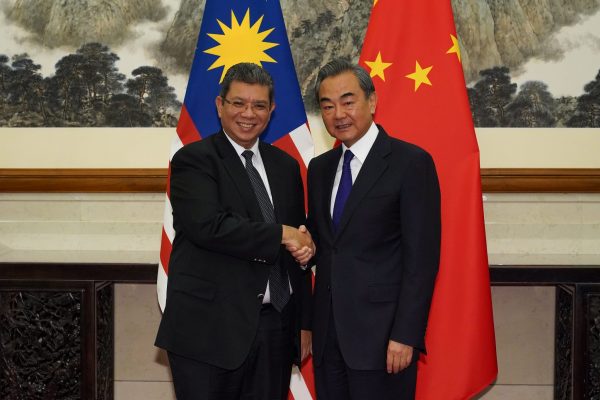That is a question being posed by a general public that is increasingly wary of the growing presence of China in the country, especially with the spike in Chinese investments after the announcement of the Belt and Road Initiative (BRI) in late 2013.
Media reports are fuelling a simmering unease with a constant focus on troubled BRI projects and the apparent pervasive use of Chinese workers in the country. China’s investments in high-end real estate, such as the Forest City project in Johor, also attracted negative publicity since it was targeted primarily at buyers from China.
The opposition party also used the controversial BRI projects and the Forest City project as the basis of hostile anti-China rhetoric during the campaign trail for the 14th General Elections in 2018. Even within the business community, the small and medium enterprises are voicing unhappiness on the lack of spillover from Chinese investments while competitive threats have intensified.
It is therefore unsurprising that the improved bilateral trade performance in 2018 is not viewed positively by all segments of the Malaysian public. There is instead growing trepidation that the increase in bilateral trade is yet another indicator of Malaysia’s perceived mounting dependence on China. This negative public opinion may subsequently impinge on Malaysia’s economic growth should the bilateral trade between the two countries falter in the future as a consequence.
The fact that Malaysia’s trade with China is mainly concentrated in its two primary export goods — electronics and palm oil — further compounds the fear of overdependence on China. The additional fact that there is a trade deficit with China is used by mercantilist supporters to spur a ‘fear of China’.
But these fears are unfounded because Malaysia’s trade partners are quite diversified while the drivers of growth are becoming less dependent on international trade. Malaysia, being a small open economy, is definitely affected by the economic growth of its main trading partners. But there are other important trading partners besides China. ASEAN nations, for example, contribute up to 27.1 per cent of Malaysia’s total trade while China contributes 16.7 per cent.
Even though Singapore is the largest of the ASEAN trade partners, the data in 2018 shows an increase in exports to other ASEAN member states such as Thailand, Vietnam and the Philippines. Besides ASEAN, the other major trade partners include the United States (8.3 per cent) and Japan (7.1 per cent).
Still, Malaysia’s trade as a percentage of the Gross Domestic Product (GDP) is relatively high, reaching a peak of 220.4 per cent in 2000. Is trade then the main driver of growth in the country? Far from it. Deconstructing the drivers of growth in Malaysia’s GDP, the Central Bank of Malaysia’s estimates show that it is domestic demand that has become an increasingly important driver of growth over time.
Private consumption contributed 51 per cent of the country’s GDP in 2012. This grew further to 55.5 per cent in 2018. Net exports contributed a mere 9 per cent in 2012 and it shrank further to 8.4 per cent in 2018. Trade as a percentage of GDP has fallen steadily since 2000 and it currently stands at 132.3 per cent in 2018.
Private consumption is, in part, powered by escalating household debt. Malaysia’s household debt to GDP ratio is one of the highest in Asia at 83 per cent in 2018 having approximately doubled from 43 per cent in 1997. Despite this, the Central Bank maintains that default is unlikely to occur at the current interest rates as household assets are four times household debts. The Central Bank is also progressively using macro-prudential policies to rein in private consumption.
Other factors that are contributing to strong growth in private consumption include relatively stable labour market conditions as unemployment remained around 3 per cent to 3.4 per cent of the total labour force for 2010–2018. Real wages per worker have also grown steadily over time. Government initiatives to support private consumption include, among others, the price ceiling on retail fuel prices as well as cash transfers.
Still, Malaysia should continue its efforts to diversify export destinations and export products in light of the ongoing US–China trade war to reduce the impact of a deteriorating global trade environment. In this regard, Malaysia should ratify the Comprehensive and Progressive Agreement for Trans-Pacific Partnership (CPTPP) as soon as possible to expand trade opportunities.
More importantly, Malaysia should continue to push for a conclusion of the Regional Comprehensive Economic Partnership (RCEP) for the same reason. Continual support for World Trade Organization reforms will help to reinstate the importance of the multilateral trading system, which is especially critical for small open economies like Malaysia. Domestically, the country should continue to focus on enhancing domestic competitiveness by improving productivity to boost future growth.
Tham Siew Yean is Senior Fellow at the ISEAS-Yusof Ishak Institute, Singapore.

